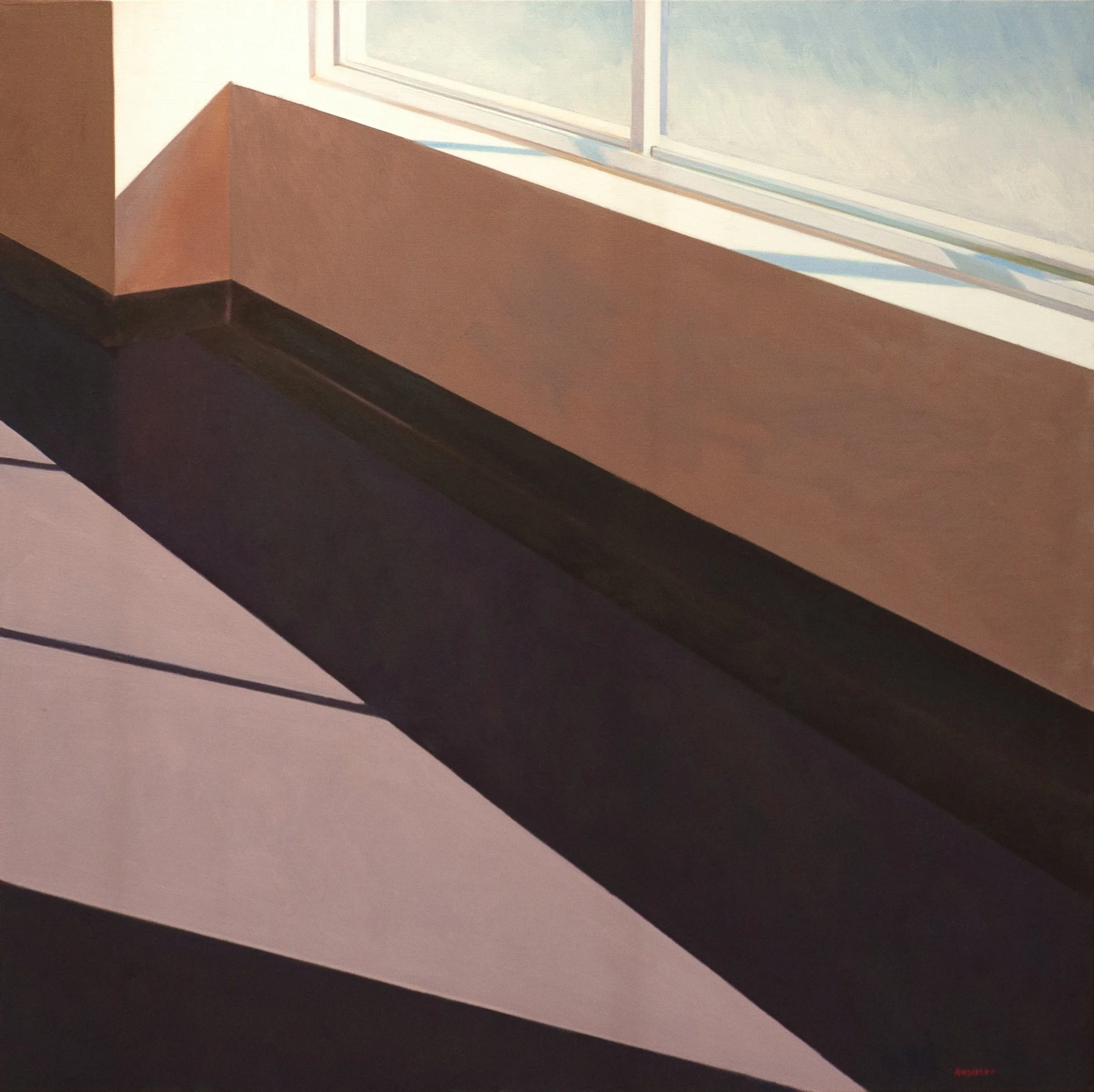“I look for offbeat beauty. I don’t know what I’m looking for until I find it.”
John Register was an American realist painter best known for his depictions of sunlit streets, empty coffee shops, hotel rooms, and desolate towns around Southern California. Critics have noted that his style is reminiscent of Edward Hopper. However, Register feels that there are differences between himself and Hopper, “With Hopper you witness someone else’s isolation; in my pictures, I think you, the viewer, become the isolated one.” Born in the vibrant city of New York in 1939, John emerged as an artist whose journey traversed the realms of commercial art, design, and the profound world of painting. His early educational pursuits led him to the Pasadena Art Center, where he delved into the nuances of commercial art. Subsequently, he expanded his creative repertoire by exploring design and television at the renowned Pratt Institute in New York, an institution with a legacy deeply intertwined with his family history, notably founded by his great-grandfather.
In the initial phase of his career, Register honed his skills as an advertisement artist, contributing his artistic talents to the dynamic world of commercial visuals. However, destiny had a different trajectory for him. On his 33rd birthday, in a decisive and abrupt move, Register chose to step away from the structured confines of corporate artistry and plunge into the uncharted waters of self-discovery through painting.
The transition marked a pivotal moment in Register's life, as he redirected his creative energy towards the world of fine art. His decision to abandon the familiar path of commercial art in favor of a more expressive and personal medium underscored a deep-seated passion for artistic exploration. Register's commitment to authenticity and self-expression became the driving force behind his newfound artistic journey.
To refine his craft and gain a deeper understanding of the art world, Register sought guidance from seasoned mentors. Under the tutelage of distinguished artists such as Lennart Anderson and Everett Raymond Kinstler, he delved into the technical and conceptual aspects of painting. These influential figures played a crucial role in shaping Register's artistic sensibilities and providing him with the tools to articulate his unique voice on canvas.
The evolution of Register's artistic process unfolded in tandem with his personal and physical challenges. Despite facing terminal illnesses, he persisted in his creative pursuits, using art as a means of grappling with the complexities of life and mortality. The crucible of adversity became a transformative space where he birthed some of his most poignant and significant works.
In the crucible of suffering, Register found a wellspring of inspiration that fueled his creative output. His art became a poignant reflection of the human experience, capturing the essence of struggle, resilience, and the inexorable passage of time. Each stroke on the canvas seemed to convey not only the technical mastery he had acquired but also the profound emotional depth that emanated from his personal journey.
On April 9, 1996, at the age of 57, John Register's artistic odyssey came to an end in the serene surroundings of Malibu, California. His departure marked the culmination of a life devoted to the pursuit of creative authenticity and a relentless quest to distill the essence of human existence onto canvas. Register's legacy endures not only through his artworks but also through the indelible mark he left on the art world—a testament to the transformative power of art in the face of life's challenges.
Today, the artist’s works are held in the collections of the San Jose Museum of Art and the Seavest Collection of Contemporary American Realism.
woman_by_the_sea.jpg
My Rating: 8/10
My Rating: 10/10
p.s.
The heliocentric theory or heliocentrism, is a model of the solar system that places the Sun at the center with the planets, including Earth, orbiting around it. This model was a significant departure from the previously accepted geocentric model, which placed the Earth at the center of the universe and assumed that the celestial bodies moved in complex orbits around it. Heliocentrism was a revolutionary idea in the history of astronomy and was proposed and popularized by the ancient Greek philosopher and mathematician, Aristarchus of Samos, but it was most famously advocated and developed by Nicolaus Copernicus in the 16th century. The acceptance of the heliocentric model marked a major paradigm shift in astronomy and science, and it played a pivotal role in the scientific revolution. It fundamentally changed our understanding of the solar system and the universe, paving the way for modern astronomy and our current knowledge of the cosmos.






